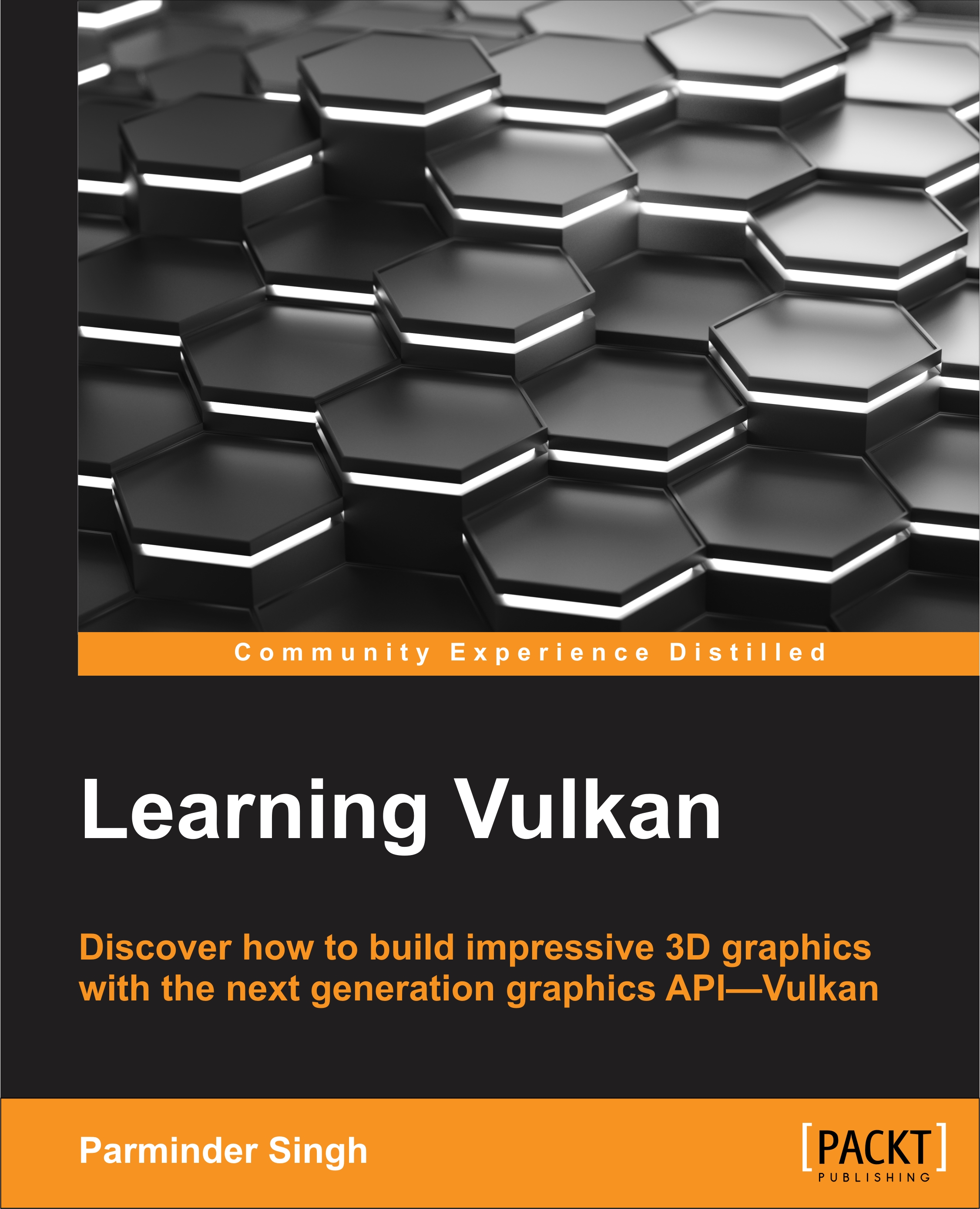Chapter 10. Descriptors and Push Constant
In the previous chapter, we rendered our first drawing object on the display output. In this chapter, we will take the previous implementation ahead and implement some 3D transformations on the rendered geometry with the help of Uniforms. Uniforms are read-only blocks of data accessible in the shader, and their value is constant for an entire draw call.
Uniforms are managed by descriptors and descriptor pools. A descriptor helps connect the resources with the shaders. But it may be expected to change frequently; therefore, the allocation is performed through a preallocated descriptor buffer called the descriptor pool.
In this chapter, we will also implement a push constant. A push constant allows you to update the constant data in the shader using an optimized high-speed path.
We will cover the following topics:
Understanding the concept of descriptors
How to implement Uniforms in Vulkan
Push constant updates























































